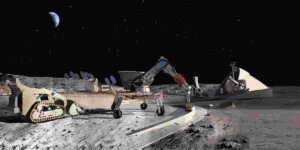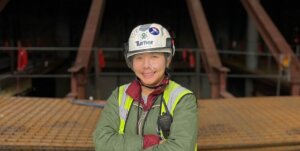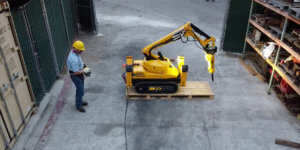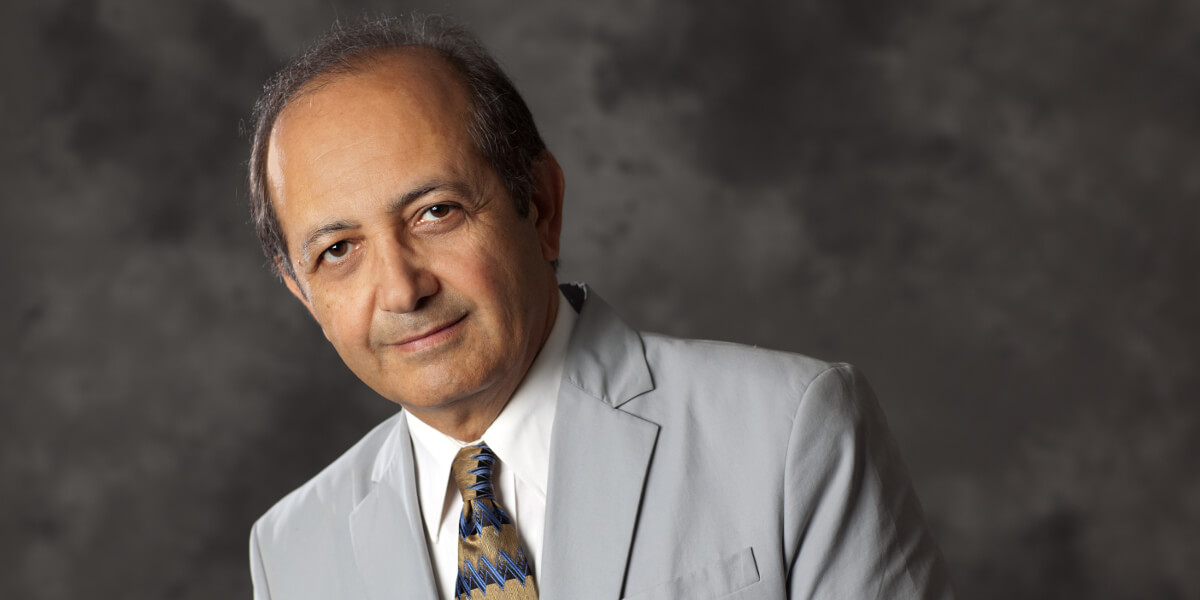
Behrokh Khoshnevis is a Dean’s Professor in the USC Viterbi Daniel J. Epstein Department of Industrial and Systems Engineering. (Photo/Michelle Henry)
Behrokh Khoshnevis is well-versed in a variety of things. He is the rare person who can discuss the construction industry in one breath and Leonardo DaVinci the next. An engineer with tremendous clout, purpose and even poetry.
Being dynamic has brought Khoshnevis, a professor in the USC Viterbi Daniel J. Epstein Department of Industrial and Systems Engineering, great success. This past winter, he was recognized by Connected World as one of the top 10 Pioneers in the Internet of Things (IoT) for his contributions in large scale 3-D printing and a concept called telefacturing: the ability to manufacture remotely.
This recognition lumps Khoshnevis in a prestigious list with the likes of former recipient and business magnate Elon Musk, founder and CEO of SpaceX and Tesla, Inc. It is an honor that is not lost on him; yet he remains calm and pragmatic in its wake.
“I just think the time has come for the paradigm shift as a result of these technologies,” Khoshnevis said.
Prior to this shift, Khoshnevis has been nothing short of prolific. Joining USC in 1983, he now holds over 100 U.S. and international patents, mostly related to 3-D printing. This printing has IoT value in construction, for both its terrestrial as well as space application. Indeed, the mission of Contour Crafting Corporation, his construction 3-D printing company, is to disrupt the status quo.
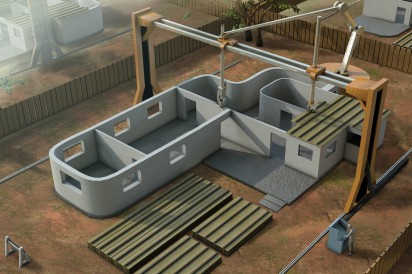
Contour Crafting is a computerized construction method that 3-D prints large-scale structures.(Photo/Contour Crafting)
“[Construction] is the last frontier for automation,” he said. “Everything else is automated, you know. Everything you use: your shoes, your clothes, your watch, home appliances. These are all made automatically today. The only thing we build by hand are these buildings.”
With telefacturing, Khoshnevis’s target is construction and manufacturing, specifically construction in hard-to-reach, hostile areas on Earth. One potential application is infrastructure and housing in arctic climates. Another is constructing shelter in dangerous situations like the Fukushima tsunami which damaged a nuclear power plant, creating a radiation leak that displaced thousands of people.
Telefacturing can also be applied to future construction in space. This is especially important since everything built there will require the use of tele-robotics and autonomous construction.
“You’re not going to send astronauts as construction workers,” Khoshnevis said. “[It’s] extremely expensive and extremely dangerous.”
Remote manufacturing, another key aspect of telefacturing, could allow a large percentage of people in the manufacturing industry to work remotely–a reality that could reduce stress and vehicle emissions (less commuting) while improving efficiency. It is a zeitgeist that could lead to greater productivity, employee well-being and environmental protection simultaneously.
Through future use of both large-scale 3-D printing and telefacturing, Khoshnevis stresses the price of construction and manufacturing will go down while quality should increase. He attributes the higher quality to processes that rely on automation instead of man-power
“I believe humans are meant to do creative work, not repetitive work,” he said. “There are all kinds of studies that show that repetitive work is not good for humans.”
He explains that through the course of 200,000 years, mankind has made impressive progress. Through technological advancement, humans have ascended from being hunter-gatherers to an agro-economy with the invention of the plow. Then came the steam engine which galvanized the Industrial Revolution. Now, there is IoT resulting from the invention of the computer and Internet.
Life is too precious to fake. Behrokh Khoshnevis
Bearing in mind this trajectory, he has an abiding faith that man-made technology will save the world, quite literally.
“Nature is not necessarily nice to itself,” Khoshnevis said. “You can get a volcanic eruption that puts megatons of CO2 in the atmosphere and burns thousands of acres of forest. If you leave this planet to its own devices, there’s no guarantee it’s going to survive. The only hope is that human intelligence can save it.”
His optimism is not far-fetched. Through his own hard work and innovation, he has realized that one can make a positive and lasting impact when intention is set. On his office wall hangs a framed quote, a poignant reminder to Khoshnevis on the meaning of life:
“The purpose of life is not to be happy. It is to be useful, to be honorable, to be compassionate, to have it make some difference that you have lived and lived well.” -Ralph Waldo Emerson
It’s a quote whose meaning Khoshnevis instills in his students each semester through one piece of solid advice: creative work must be honest work.
“One cannot fake creativity; regardless, faking anything is not right because we only live once,” he said. “Life is too precious to fake.”
Published on March 24th, 2017
Last updated on May 2nd, 2022




